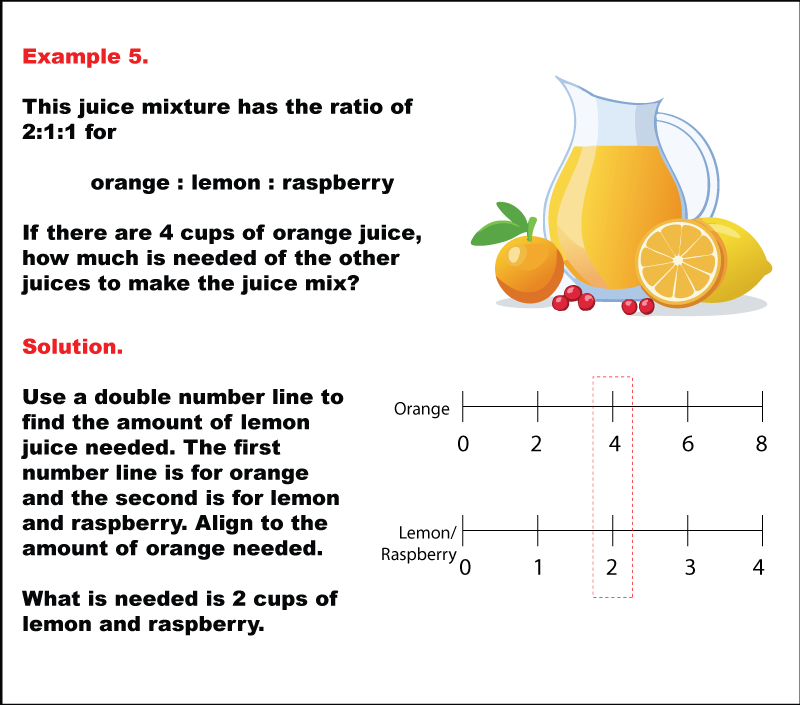
Display Title
Math Example: Ratios with Double Number Lines: Example 5
Display Title
Math Example: Ratios with Double Number Lines: Example 5

Topic
Ratios
Description
This example introduces a three-part ratio of 2:1:1 for orange, lemon, and raspberry juice. Given 4 cups of orange juice, students need to determine the amounts of lemon and raspberry juice required. The solution shows that 2 cups each of lemon and raspberry juice are needed to maintain the ratio.
By introducing a three-part ratio, this example expands students' understanding of how ratios can be applied to more complex mixtures. It demonstrates how double number lines can be adapted to handle multiple components, with one line representing the primary ingredient (orange juice) and another line representing the combined amount of the other ingredients (lemon and raspberry).
Presenting multiple worked-out examples is crucial for students to fully grasp the versatility of ratios and double number lines. Each new example builds upon previous knowledge while introducing new complexities, helping students develop a more nuanced understanding of the topic and improve their problem-solving skills in various contexts.
Teacher Script: "Let's look at a more complex juice mixture with three ingredients: orange, lemon, and raspberry. Our ratio is 2:1:1. If we have 4 cups of orange juice, how can we use our double number line to figure out how much lemon and raspberry juice we need? Notice how we've grouped lemon and raspberry together on one line since they have the same part in the ratio. How does this help us solve the problem efficiently?"
For a complete collection of math examples related to Ratios click on this link: Math Examples: Double Number Lines Collection.
| Common Core Standards | CCSS.MATH.CONTENT.6.RP.A.3 |
|---|---|
| Grade Range | 6 - 7 |
| Curriculum Nodes |
Algebra • Ratios, Proportions, and Percents • Ratios and Rates |
| Copyright Year | 2024 |
| Keywords | double number lines, ratios |